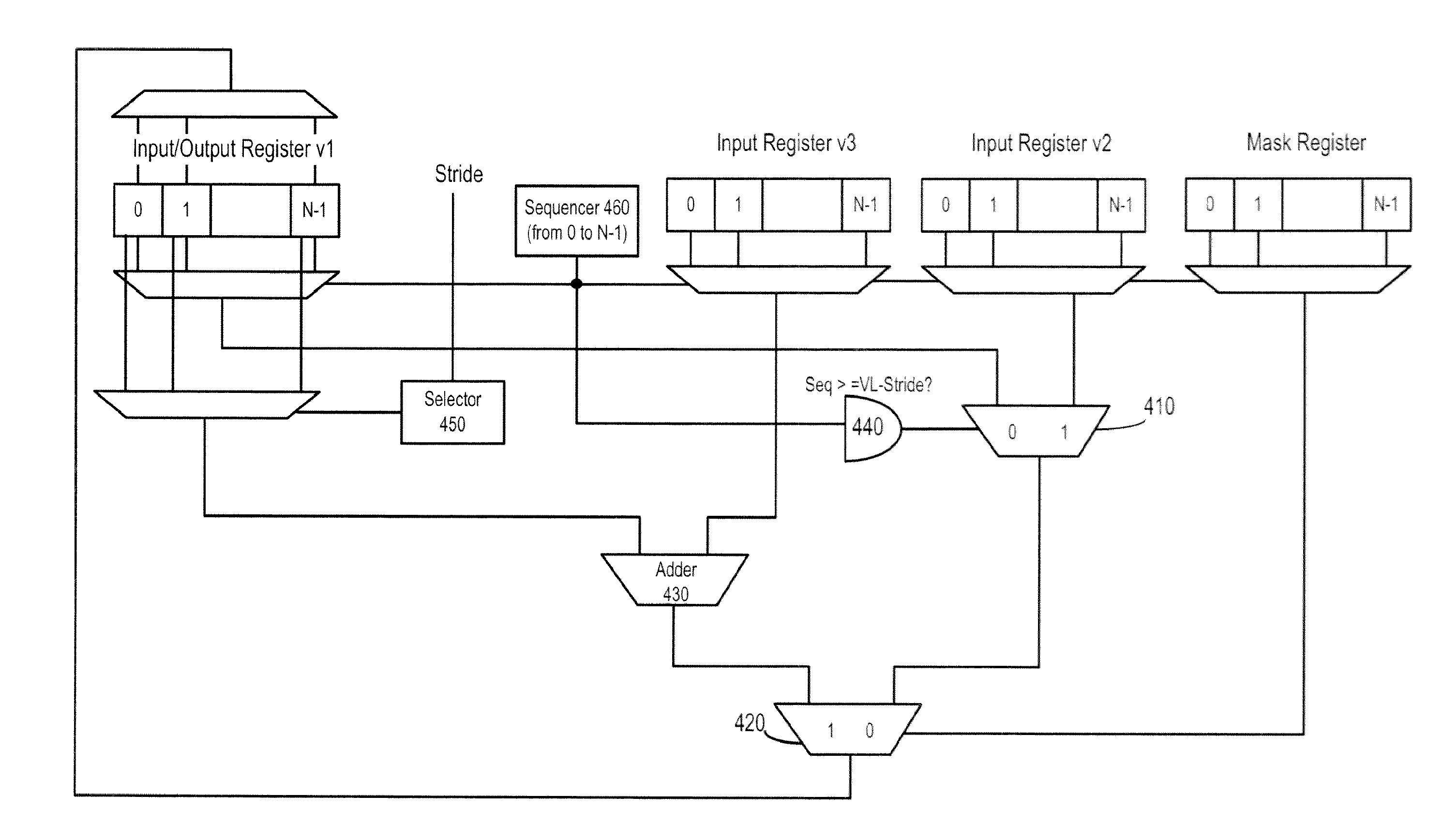Instruction to reduce elements in a vector register with strided access pattern
a vector register and access pattern technology, applied in the field of instruction set architecture, can solve problems such as loss of performance and inability to vectorize current compilers
- Summary
- Abstract
- Description
- Claims
- Application Information
AI Technical Summary
Benefits of technology
Problems solved by technology
Method used
Image
Examples
Embodiment Construction
[0022]In the following description, numerous specific details are set forth. However, it is understood that embodiments of the invention may be practiced without these specific details. In other instances, well-known circuits, structures and techniques have not been shown in detail in order not to obscure the understanding of this description.
[0023]Embodiments described herein provide a class of new instructions (also referred to as “vector reduction instructions”) that perform associative reduction operations where data dependencies within a vector register exist. The data dependency distance (also referred to as “stride distance”) is a positive integer that may be greater than one. A greater-than-one stride distance is referred to herein as a “non-unit” stride distance. The non-unit stride distance is specified as input for the vector reduction instructions, and is used for computing potentially interdependent reduction results. Additionally, the vector reduction instructions allo...
PUM
 Login to View More
Login to View More Abstract
Description
Claims
Application Information
 Login to View More
Login to View More - R&D
- Intellectual Property
- Life Sciences
- Materials
- Tech Scout
- Unparalleled Data Quality
- Higher Quality Content
- 60% Fewer Hallucinations
Browse by: Latest US Patents, China's latest patents, Technical Efficacy Thesaurus, Application Domain, Technology Topic, Popular Technical Reports.
© 2025 PatSnap. All rights reserved.Legal|Privacy policy|Modern Slavery Act Transparency Statement|Sitemap|About US| Contact US: help@patsnap.com



